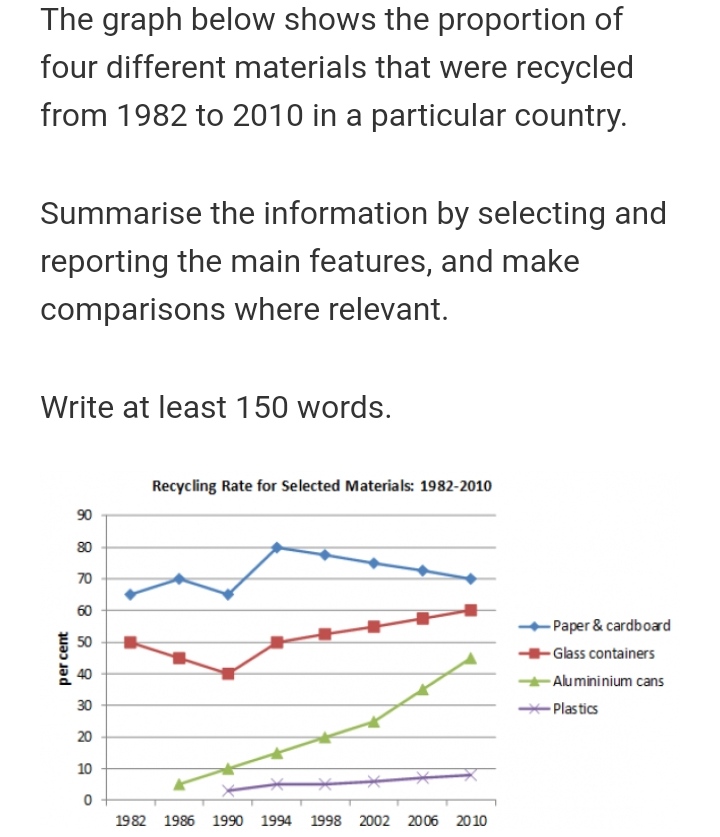the proportion of four different materials that were recycled
The graph depicts the percentages of four recycled materials, namely paper, glass, aluminium and plastic, in a country between 1982 and 2010. Overall, it can be seen that paper and glass were recycled the most, but the rate of recycling rose steadily during the period. Whereas aluminium cans' recycling increased considerably, recycled plastic was almost same and the lowest of all.
Paper and cardboard's recycling started with about 65% in 1982, which, after some fluctuations, grew slowly to 80% in 1994. Thereafter, a continuous drop was seen in the paper recycled, at almost 2% in every four years. Meanwhile, half (50%) of the total glass containers produced were being cycled in 1982. Although this recycling hit a low of 40% in 1990, the proportion of recycled glass grew gradually to 60% during 1990-2010.
In context to aluminium cans, the recycling process began at just 5% in 1986, but it went up noticeably high at nearly 45% in 2010. The growth rate was about 5% every four years until 2002 and 10% for the subsequent period. Plastics, however, witnessed a minimal rise of only around 7% over the 20-year period starting from 1990 [it was approximately 2% and 9% in 1990 and 2010, respectively].

IMG_20230211_185756..jpg
